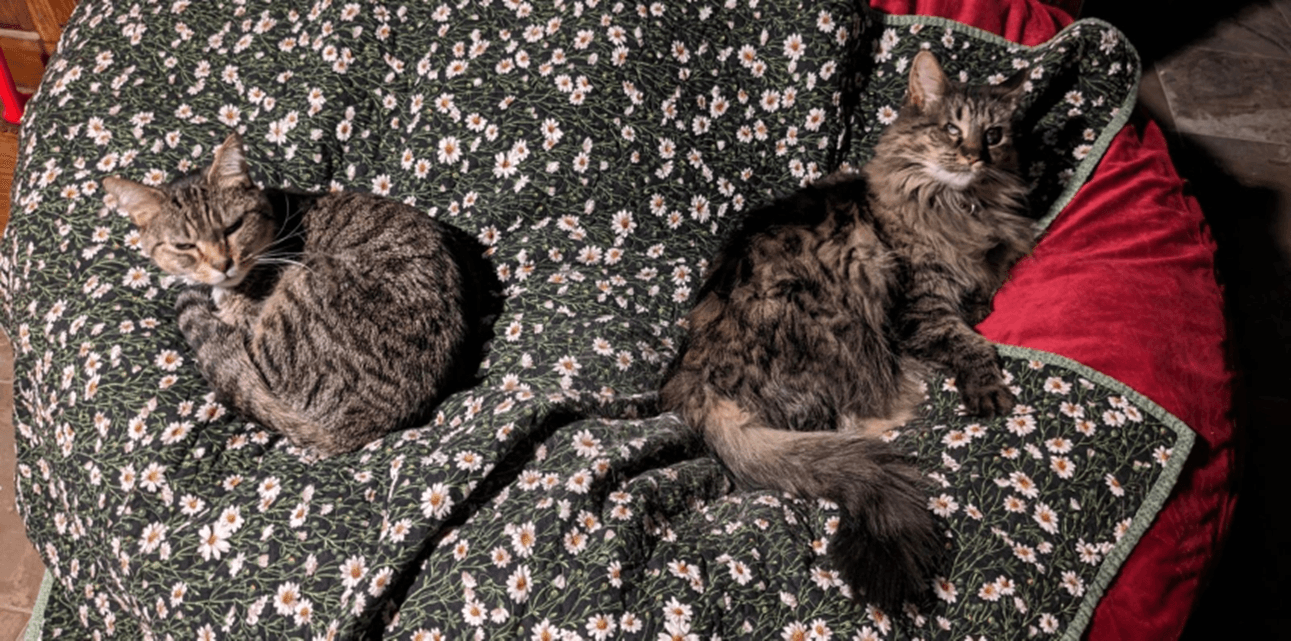
Editor’s Note: This is part two of a three-part series. Part 1 is here
The second part of our new pet introductions series is all about cats. Even though adopters may be eager and excited to add more cats to their household, our feline friends usually do not feel the same way. The success of a cat adoption relies heavily on proper cat-to-cat introductions.
Know your cat’s purr-sonality
As with dogs, cat owners should take into consideration their resident cats’ behaviors and general demeanors. Is the cat outgoing and relatively laid back? Is the cat typically timid, hides when guests come over, or displays other signs of stress? Has the cat interacted with other cats in the past?
Both outgoing and timid cats may do well with other cats over time, but the way in which they are introduced and the pacing will need to be adjusted based on their individual personalities.
They’ll need some alone time
Separate spaces are a must in the beginning. At minimum, for the first few days (maybe longer) each cat should have its own space and all the resources it needs. Often the easiest way to do this is to put the new cat in a separate room while the resident cat has free roam of the rest of the home. Be sure each cat has a bed, a hiding spot, litter box, food, water, toys, etc.
Throughout the entire introduction period, be sure to give each cat individual one-on-one time. This could be petting, relaxing or hanging out, interactive playtime, or perhaps brushing. While the cats are getting used to the idea of another cat in the home, continuing to strengthen the bond between each cat and the owner is important.
If all the cats seem relaxed after the first few days of isolation, this is a good time to start indirect interactions. An indirect interaction would be feeding both cats at the same time (ideally high-value items such as wet food or treats) right next to the door on either side. The cats will be able to sense another cat is on the other side of the door, and that will be paired with a positive experience.
Next, swap their scents. Remove an item such as a blanket or bed from each cat and swap them. This gives the cats the opportunity to smell each other thoroughly before seeing each other. Repeat indirect interactions like this for at least a few more days before moving on to the next step.
Time to meet—slowly
If all is going well and cats are relaxed, visual introductions are next. Cracking the door to allow them to see each other briefly is a good start. Keep it short. If the cats make eye contact and everyone is relaxed, give a treat and shut the door again. Repeat this many times over a few days to get them more used to seeing one another.
If at any point there is hissing, growling, or other signs of stress and discomfort with the situation, simply stop and try again at a later time. Another approach may be to place both cats in carriers or other restricted-access areas so they can see each other without the opportunity to touch. Keep these sessions brief and positive. Do not scold, yell, punish, etc., as that will only make them less comfortable with the situation. Simply stop the interaction and go back to the previous stage.
As you continue to lengthen the time of visual interactions and there are consistent positive results, it may be time to provide supervised direct interactions. In the early stages of direct contact, continue with short and positive sessions.
Even if it seems like things are going well, it’s best to err on the side of caution. Allow them to free roam when supervised, but they should return to separate spaces in the early days of direct interaction when the owner is at work or sleeping.
Patience is crucial during this process
Pet owners will come to understand the specific body language and behaviors of each animal and can
gradually flow through the stages of introductions. From start to finish, this process may take as little as
1-2 weeks, or it could take several months. The key is patience to allow everyone adequate time and space to adjust. Seek help and guidance from TCHS staff whenever needed!
Rose Hegerle, CVT, is TCHS’ Director of Veterinary Services. She has worked at TCHS since 2014. She has cats, dogs, reptiles, fish, and tarantulas!
PICTURED: Two of Rose’s cats. Slow and proper introductions are critical when bringing a new feline into a home.









